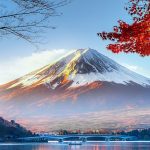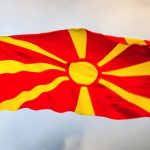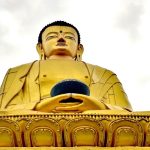
Summer Solstice
The summer solstice announces the first day of summer, and its arrival happens twice a year—once in the Northern Hemisphere and once in the Southern Hemisphere. In the Northern Hemisphere, it’s known as the June solstice, and in the Southern Hemisphere, it’s known as the December solstice.
Regardless of which half of the world it’s celebrated in, it occurs when the sun reaches its highest position in the sky, and the day has the longest period of daylight. In the Arctic Circle, a person can expect continuous daylight around the summer solstice. The summer solstice occurs around June 20th through June 22nd in the Northern Hemisphere and between December 20th and December 23rd in the Southern Hemisphere.
For those paying close attention, those same dates are the ones in the opposite hemisphere to denote the winter solstice. Historically, the summer solstice has been seen as an important time of the year in cultures all over the world. This day, also known as Midsummer or Estival Solstice, is usually marked by rituals, celebrations, and festivals.
However, even in places where it’s not treated as a special occasion, it’s still marked as the first official day of summer. It’s also traditionally a time when people spend more time outdoors—enjoying activities such as barbecuing, swimming, playing sports, attending beaches, visiting National Parks, and playing sports.
The History Of The Summer Solstice
Observations of the June or Summer Solstice have occurred since prehistory. Even before ancient peoples had a system for calculating the movement of the sun or the length of the seasons, people understood that at this time of year, there was more sunlight than at any other time of the year.
Although celebrations vary widely from place to place and from time to time, we thought that we’d select three different summer solstice celebrations from history and talk a little bit more about them. The three historical summer solstice celebrations that we’re going to be talking about are Native American traditional tribal celebrations, pagan rituals at Stonehenge, and the ancient Roman celebrations of Vesta.
Native American Solstice Traditions
Although Native American celebrations vary from tribe to tribe, and even from one period of time to the next, most of the traits these celebrations share are communal feasting, dancing, drumming, singing, and prayers. Some celebrations involved vision quests, ritualistic fasting, and skin piercings as well.
Some historians believe that the stones arranged on top of Wyoming’s Big Horn Mountains are dedicated to the summer solstice. Known as the Bighorn Medicine Wheel, this 80-foot diameter stone “wheel” has 28 spokes made from a pile of stones and a cairn made of stones. This centralized cairn is about 2 feet high and is about 12 feet in diameter.
This construction is at the top of a range that’s over 9,600 feet high and is only able to be reached during the summer months because it’s otherwise covered in snow. What’s impressive about this stone wheel is that it aligns perfectly with the summer solstice. It has points that follow the path of important stones and lets the observer know when the summer solstice is going to arrive.
It’s believed that the Bighorn Medicine Wheel was constructed somewhere between 300 and 800 years ago. Scholars say that the star alignments are most accurate for the year 1200 AD, as slight changes in the orbit of the Earth would cause the “calendar” to eventually veer off course over time.
Stonehenge Summer Solstice Traditions
Unfortunately, at this time, not all archaeologists are willing to conclude that Stonehenge was indeed used for summer solstice celebrations. These stone ruins are aligned with the setting of the sun, and with the summer solstice, but it’s still unclear if there were any type of rituals used on or around the summer solstice. There are modern celebrations held at Stonehenge during the summer solstice, but there just isn’t any evidence for any kind of organized rituals historically.
Roman Religious Festival Dedicated To Vesta
Although Vestalia—the religious festival dedicated to Vesta and the Penates—wasn’t strictly a summer solstice celebration, it was observed around the time of the solstice. This festival ran from June 7th through June 15th, and during this time, women offered sacrifices.
A donkey was also consecrated to the goddess Vesta, and this animal was crowned with flower garlands and bits of bread. After the festival, the temple was ritually purified, and the festivities ended.
Fun Facts About The Summer Solstice
As we always do, we thought that we’d do some research and find out some of the most interesting facts we could find about the summer solstice. After a bit of research, we came across the following factoids that we think people reading this holiday entry are going to find amusing or interesting.
The Summer Solstice Places The Sun Over The Tropic Of Cancer
Although the sun appears to pause on this day and may seem to be directly overhead at the moment of the summer solstice, the fact remains that the sun is directly above the Tropic of Cancer, located at 23 degrees 27 minutes north latitude. At that location, the sun is directly overhead.
The Word Solstice Comes From A Latin Word
The word “solstice” comes from two Latin words that have been placed together. These words are sol—a word that means sun, and sistere—a word that means to stand still. Therefore, the word solstice literally means “the sun stands still.” And the sun does appear to stand still on this day because the sun’s relative position in the sky at noon doesn’t change much during the solstice.
One Of The Largest Bonfires In The World Happened During The Summer Solstice
The world’s largest bonfire, or at least one of the largest bonfires, was created during the Midsummer festival in Norway. This fire set the Guinness Book of World Records for the tallest bonfire.
This bonfire was 155.5 feet tall and was set in Ålesund, Norway. Of course, this world record wouldn’t last long and was eventually broken in 2019 by the Austrian Carnival. That fire occurred on March 16, 2019, and was 60.64 meters high and was set in Lustenau, Austria.
Modern Summer Solstice Traditions, Celebrations & Observations
The June Solstice is a time when most schools in the United States are off for summer break, and more and more people are heading out on vacation. While the day isn’t celebrated as much, the season it begins is important to many people living in the U.S. Many Americans also take their vacations during this time.
This time of the year is also the start of the summer grilling or BBQ season. In the United States, there are a variety of different types of BBQ—all determined by the region where the BBQ takes place. While a lot of different BBQ styles migrate from one place to another, many different parts of the country are known for a particular type of BBQ.
For example, in Memphis, pork is dry-rubbed and pulled and served with a side of BBQ sauce. In Central Texas, the meat is the star of the show, and huge beef briskets and ribs are emphasized. In St. Louis, pork steaks made from thinly slicing pork butts are grilled and covered with a thick tomato BBQ sauce.








